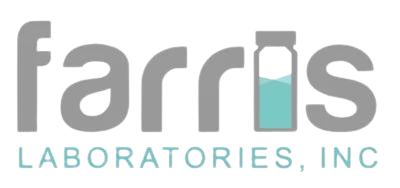How to Choose the Right Syringe
Whether it’s a flu shot, injection of anesthesia, or something else, all shots require the proper equipment to be safely and effectively administered. Both healthcare professionals giving shots to patients and people administering shots to themselves should take great care to use the appropriate syringe and needles. But how do you know what to use?
The correct type of needle or syringe will depend on the medication, the dosage, the injection site, and the state of the patient. Making the right choice will help make the injection delivery less stressful and less painful. Here’s what you should know about different syringe types and sizes:
Understanding Different Syringe Sizes
Syringes are labeled by how much liquid or medication they can hold. For liquids, this is measured in milliliters (ml). For solids, this is measured in cubic centimeters (cc). It’s worth noting that 1 cc is approximately equal to 1 mL.
Measurements can be found on the barrel of the syringe. The syringe size depends on how much medication is prescribed (the volume), and this is used to determine what size needle should be used. Here are some examples:
- 1 mL and 1 cc syringe: Intended for lower-dose medications. Their needles are no longer than half an inch and have needle gauges between 29G and 31G. 1 cc syringes are commonly used for self-care by those taking diabetic medication at home.
- 3 mL: The needle length of this syringe depends on the patient's age and ensures no injection site reactions. The needle gauges are between 23G and 25G. These syringes are used for vaccination.
- 5 mL: Used for intramuscular injections, these have a needle gauge size between 22G and 23G.
- 10 ml: Has a needle gauge between 22G and 23G and a needle length between 1 and 1.5 inches. Intended to be used for large-volume intramuscular injections.
Syringes Without Needles
Even without a needle, a syringe has various applications, including:
- Extracting, measuring, and transferring chemicals and solvents in the laboratory.
- Feeding milk, medicine, and even multivitamins to small farm animals in specific doses.
- During mucosal immunization or oral drug administration, a syringe without a needle is used to administer the liquid doses.
Oral medication syringes
An oral medication syringe has a clear barrel with easy-to-read scale measurements, ensuring children get the correct dose of medicine they need. These kinds of syringes are not compatible with a hypodermic needle attachment, which makes them safer and easier to use. They also mask the odor of the drug better than spoons or cups and, in cases where the drug has a bad taste, limit the area that comes in contact with the child's mouth so they swallow effortlessly. Oral syringes are between 1mL to 10 mL in size.
Allergy Syringes
An allergy syringe administers the shot in two phases. First is the buildup phase, which is once a week for about seven months. Second, is the typical stage, which is two times a week. Allergy syringes are suitable for subcutaneous injections because they have a gauge between 25 and 27 and a short (half an inch) non-removable needle that can easily pierce the fatty tissue between the skin without causing much discomfort. Allergy syringes are used in allergen immunotherapy, which is one of the most effective forms of allergy treatment.
TB Syringes
TB syringes are made of very thin stainless steel tubing and have graduations on the side of about 0.01 ml. They are commonly used for tuberculosis testing and vaccinations. The TB syringe also has bold scale markings that assist in making accurate dosage measurements and delivery easy, and their smaller and thinner size makes them easier to control and less threatening to patients.
No matter what kind of syringe you are using, you should always ensure it is sterile before carrying out a procedure and dispose of it properly. This protects you, patients, and others from disease and needlestick injuries. Additionally, always be sure to consider the volume of medication, how it will be administered, and the needle gauge before use. All these are factors that contribute to safe syringe usage.
Looking for a trusted medical supplies provider? Contact Us at Farris Labs.




